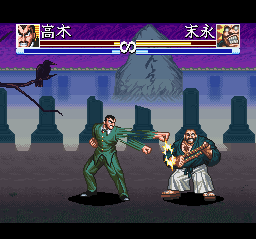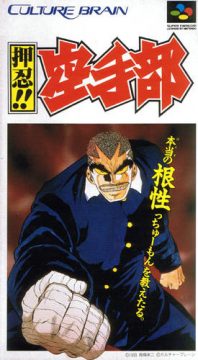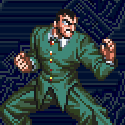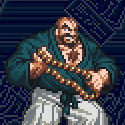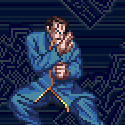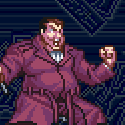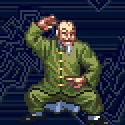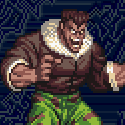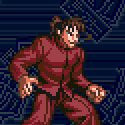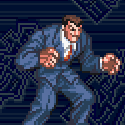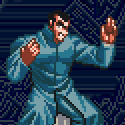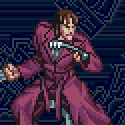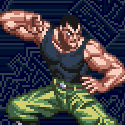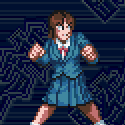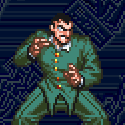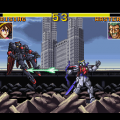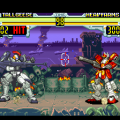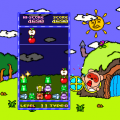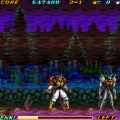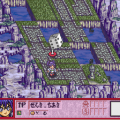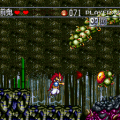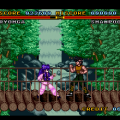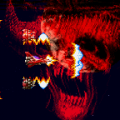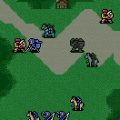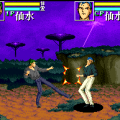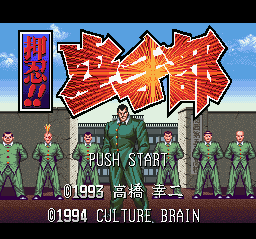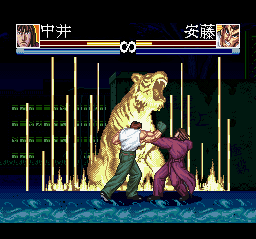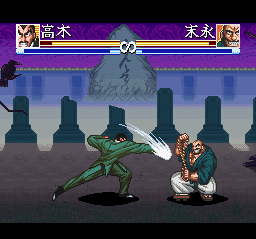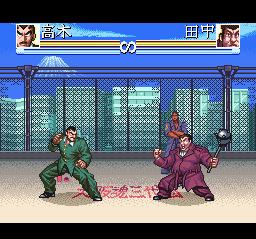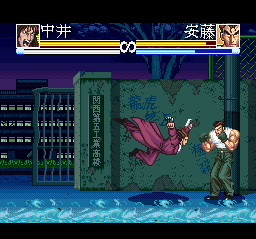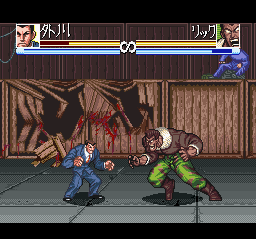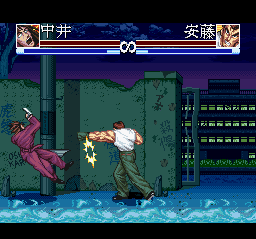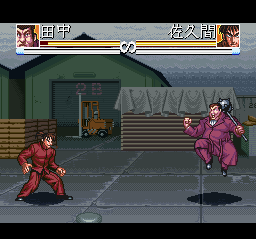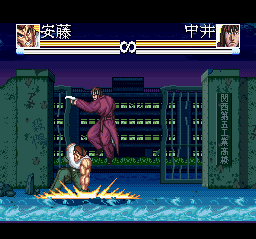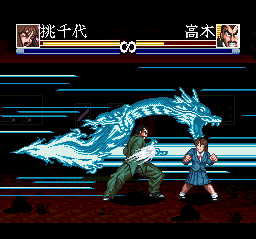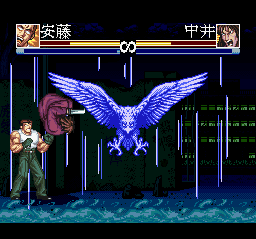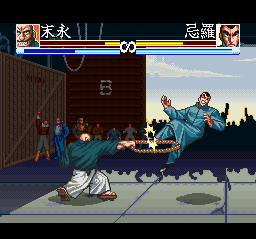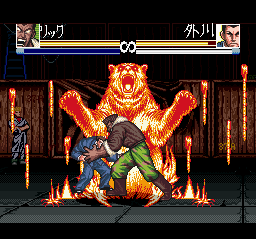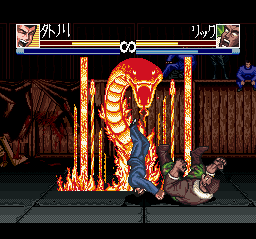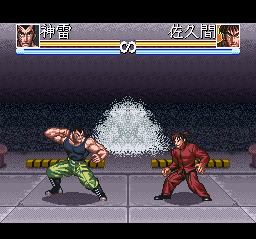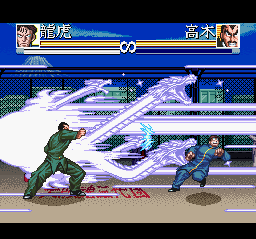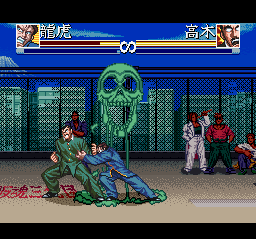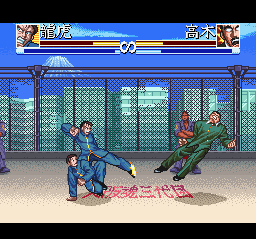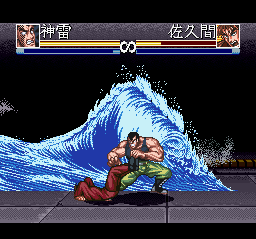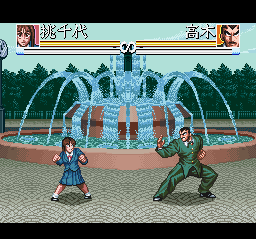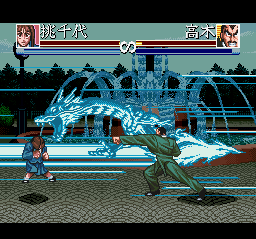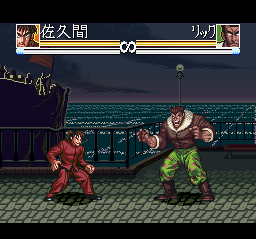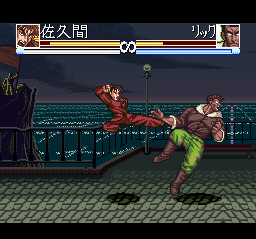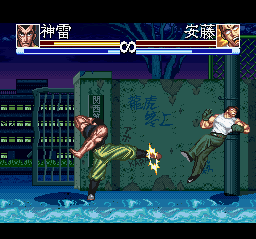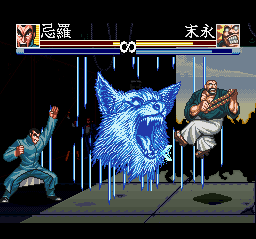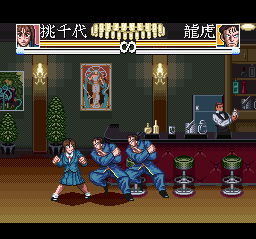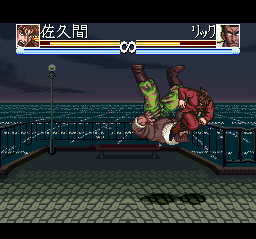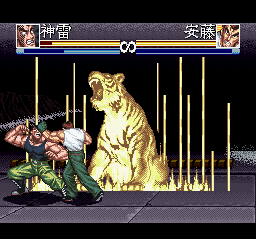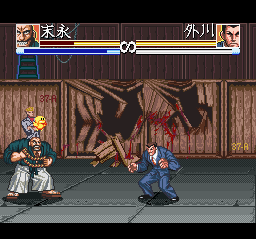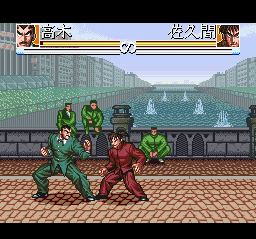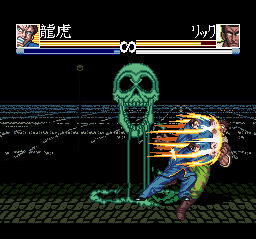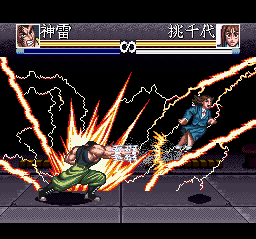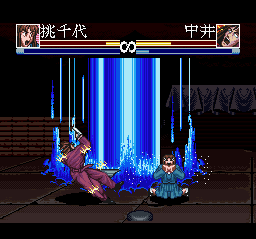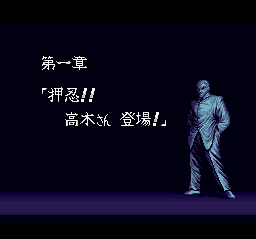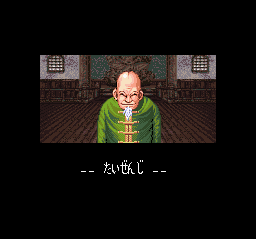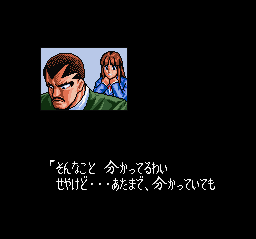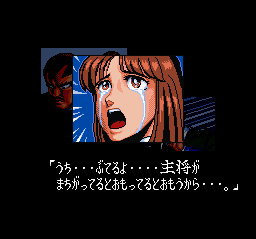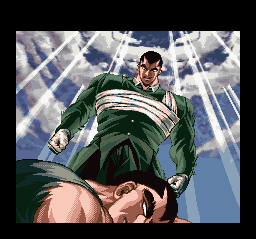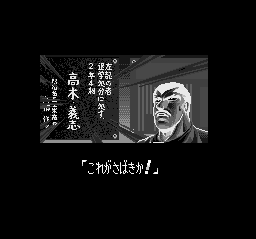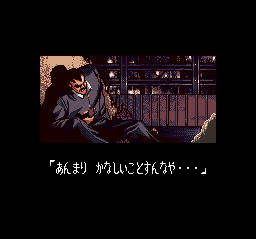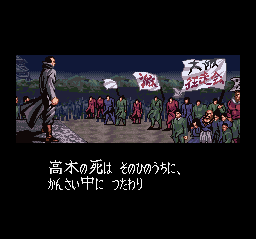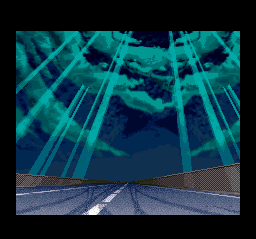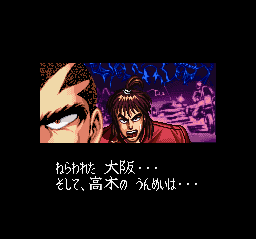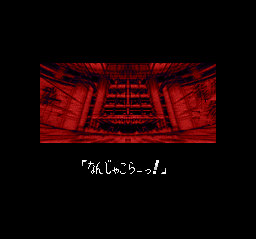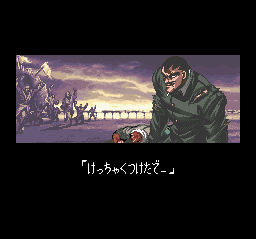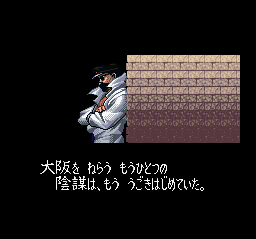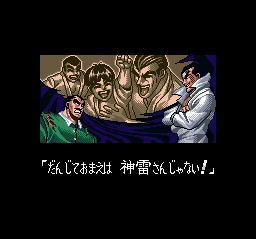You’ve probably already heard this all a million times before: Street Fighter II hits the arcades in early 1991 and lights the coin-op biz on fire. What follows is a tragically-all-too-short, but extremely prolific period where everybody and their NBA All-Star is getting in on the fighting game craze. But that explosion that was ignited by Street Fighter II lead to over-saturation, and that over-saturation lead to indifference toward this once-fresh genre. By the time that N64 and PlayStation where out, people were ready to move on. And move on they did, leaving what was once the hottest trend in video games behind to languish in niche genre territory.
But the real casualty of the downfall of the fighting game isn’t the genre itself – it’s all of those over-looked games that’ll never get their due. The ones that came and went without much, if any, fanfare, and that even today in the era of emulation have failed to generate all that much interest. It’s really kind of a shame that so many top notch fighters seem destined to remain so totally and forever obscure, because there’s a whole hell of a lot more to the genre than just Capcom and SNK.
And some of these tragically neglected not-even-cult anti-hits can come from places that you wouldn’t expect to find them. Take, for example, the developer Culture Brain. Not exactly a name that you’d associate with fighting games, but, believe it or not, they actually started releasing titles in the genre as far back as 1984. To date, they’ve produced nearly ten of the things in all, spanning at least four different platforms. The bulk of which fall into their two long running series, Super Chinese and Hiryū no Ken (known for the identically titled NES and N64 games “Flying Dragon“). Like with pretty much all of the developer’s releases, the quality of their fighting games varies wildly, but they did produce a few entertaining titles in the process. One such release is the Super Famicom fighter Osu!! Karate Bu.
The basis for Osu!! Karate Bu (which translates to “Go!! Karate Club”) is the manga series of the same name, which ran from 1985 to 1996. The series revolves around the members of Kangokou High School’s karate club, a front for a group that trains the toughest youths in Osaka. It began as a light hearted parody of youthful thuggery, like the Nekketsu Kouha Kunio-kun video games, but later took on a more serious tone. It also started aping YuYu Hakusho, or Dragon Ball Z, or Hokuto no Ken, or whatever, and had the characters throwing fireballs and stuff at each other and doing other ridiculous magical nonsense. Of course, that’s the exact same kinda craziness that inspired Street Fighter II to begin with, so it was probably only a matter of time before somebody turned it all into a Street Fighter II clone.
From the get-go, Osu!! Karate Bu offers twelve different combatants for you to choose from, with two more (Honda Momochiyo and Super Takagi) becoming available by entering L, Left, Down, B, A, R at the title screen.)
Characters
Takagi Yoshiyuki
The ultra macho, wisecracking anti-hero of Karatebu. He got his start in the manga as a minor character, but later became the series’ main protagonist and the leader of both the school’s karate club and of all of the highschool thugs in Osaka.
Andou Makoto
The leader of the school’s boxing club, Andou once beat Takagi in a fight, but later became his ally after the loss was avenged. Every SFII clone needs its Balrog knock-off boxer that can only punch, and Andou Makoto in Osu!! Karate Bu’s.
Suenaga Zen
A ruthless thug from Kobe who’s bald, bearded, and wears giant prayer beads with which to beat ass.
Ryuuryuu / Koryuu
Two twins who mimic each other’s every move, save for during their specials and supers. Together they make up one of the Three Pillars of Kobe (along with Zen and Powered), a group that apparently runs the show in that particular town.
Tanaka Hiroyuki
A hitman from Ehime who works directly for Jinrai Isao. He wears a trenchcoat and wields a massive spiked club.
Kou Ryuun
There’s no shortage of old martial arts masters in the fighting genre, and the mountain-dwelling, temple-care-taking, Takagi-teaching Kou Ryuun was an obvious choice to serve that role in Karatebu.
Rick Powered
Owner of the creatively named “Rick Bar” in Kobe, and one of that city’s most powerful thugs. His bomber jacket, camouflage pants, and combat boots indicate that he’s probably either supposed to be ex-military or just a caricaturization of Americans.
Sakuma Jujirou
An expert on street fighting from Jusohokusai Highschool in Osaka, and an ally of Takagi. Smokes a pipe at all times, even when he’s fighting.
Sotogawa Tetsuya
The captain of the wrestling team at Imamiya University, and an ally of Kira Takashi. Given his wrestling background, he’s a tad overdressed, doing all of his grappling in a two piece suit.
Kira Takashi
Kira is the leader of a karate club in Kansai, and Takagi’s former childhood training partner. He harbors a bitter jealousy toward Takagi and has come to Osaka to get revenge.
Nakai Touru
This hitman hails from Kagawa and takes orders directly from Jinrai. He wears a trenchcoat and wields a claw, which he even licks – a quirk that was totally not stolen from any other fighting game characters.
Jinrai Isao
Jinrai was once the mentor of Takagi and Kira and the head of all highschool thuggery in Osaka, but that all ended when he abruptly disappeared. He’s recently resurfaced as the leader of the massively powerful Shikoku Alliance, and he’s determined to take over Osaka, thus initiating the events of the game.
Honda Momochiyo
Takagi’s devoted girlfriend, whom he has apparently taught to fight. She’s also the manager of his karate club.
Osu!! Karate Bu doesn’t try to reinvent the genre. It really is just one more Street Fighter II clone in the sea of Street Fighter II clones that were produced in the 1990s. But unlike most of those games, Osu!! Karate Buactually makes an effort to be at least a little different. This is apparent right from the start up screen, where, instead of just being offered “1P” or “2P”, you’ve got four different modes to choose from. From left to right, these are Story, Arcade, Vs., and Team Battle (the fifth one is the Option mode). Arcade is your basic Street Fighter II-style mode – pick one character, then try to beat all the rest. Vs. is like that, only you can change characters between each match. Team Battle is actually one of the cooler features in the game. How it works is that you pick any five characters that you like and pair them up against any five of another player’s (or the CPU if you’re playing on your own). Then whoever takes the most victories by the end of all five match ups is declared the winner.
Then there’s Story Mode, where you guide Takagi (and Takagi only) through an extensively detailed series of events that may or may not be a story arc from the manga. Not being Japanese literate, The gist of it seems to be as follows: Shit’s going down. Takagi’s kicking ass. Things aren’t as they seem! Kou Ryuun’s training Takagi! And hey, there’s Jinrai! Much of the story is told through manga style interludes between fights, which, at their best, feature some of the most gorgeous 16-bit sprite art that you’ll ever see. Whether its the blurred, blood red exterior shot, or the monochrome still of Takagi, or the close-up of Kou Ryuun, or the images of a battered post-fight Takagi, or the dramatic shaded intro, or the stretch of highway reaching into the horizon beneath a dark cloudy sky, or the shot of Takagi standing over a fallen Jinrai – all of it looks incredible. It’s seriously worth playing through Story Mode in its entirety just to see all this stuff in its full sized glory.
But as far as the actually game itself? Well, there’s some interesting stuff going on there, too. Most significantly is that the standard best two out of three format has been ditched entirely for one that’s actually quite unique. All of the matches play out over merely one round, but there’s something that sets it apart from other games that use the same concept. You’ll notice that below your character’s health bar is a second, smaller meter. This is your “Ki” meter. It serves multiple purposes (which I’ll get to), but its most important function is that it potentially allows you to get back up from a knockdown and keep on fighting. How this works is that after each KO you’re given a five count, during which time you’ll need to button mash to get back to your feet. Doing so will deplete your Ki meter, and you’ll be rewarded by having your health replenished by half as much as the amount of Ki that you sacrificed. You can only do this twice though, as you’ll be down for good after the third KO. Further complicating its match format are the facts that the other fighter’s health isn’t replenished at all after a KO, and if you don’t have enough Ki after a knockdown then you’re down for good.
Which brings me to the following: How the whole Ki system works exactly is kinda complicated. You begin with no Ki, at all (this can be modified in the Options menu). To build the meter up you have to either get hit or charge it manually (hold either shoulder button while blocking). Normally the meter will build pretty slowly on its own, but if you take a hit while it’s charging the thing will just skyrocket up. This doesn’t mean that you have to let yourself get pummeled on to build your Ki meter up, because you’ll still block stuff while charging, though at the expense of being susceptible to block damage from normals. This has two interesting consequences. First is that it rewards strong defense by keeping you in the game longer. Second is that it also rewards highly skilled players who can rushdown their opponent and take them out in no time flat before they can build up enough Ki to sustain themselves.
The Ki meter does a couple of other things as well. Its secondary function is that it doubles as a super meter. Moreso, you can also pull off a highly powerful charged attack by holding down any face button and releasing after your Ki meter starts to drain – the more it drains, the more powerful the attack (though it will only deplete up to 50% of the full meter). This brings a surprisingly deep level of strategy to the game. During fights you have to rationalize just how to use your Ki. Do you pull off a super and leave your Ki meter completely empty, thus completely screwing yourself over if you get KO’ed, or do you go for a less powerful charged attack instead? And if so, how much of your Ki do you wanna let drain? Do you go for a low powered charged attack, or do you risk over committing and whiffing the move, leaving you with half or more of your Ki gone? And if you’re not confident in your ability to successfully apply these techniques, then do you just avoid them altogether at the expense of being limited to your less powerful attacks? Failing to consider each and every one of these things during a two player match will likely render your ass kicked and your name taken.
Also of interest is the game’s obscure counter system (obscure in that it’s never pointed out to you and you’d never find it on your own if somebody didn’t tell you about it). Mechanically speaking, it vaguely resembles the advanced blocking/parrying techniques that were beginning to evolve around the same time in games like World Heroes 2, though with completely different consequences. While blocking, you can push any face button IMMEDIATELY before your foes’ strike makes contact and you’ll dodge the attack and counter it with a hit of your own.
The aesthetic is also pretty cool. The characters obviously weren’t designed for a fighting game, and you can definitely tell that from how they’re presented. There are none of the gi wearing generic martial artists, giant wrestlers, mutants, sumo wrestlers, or magical characters that populate the bulk of the genre, nor are there any of the fantastical locations that dot the vast majority of the fighting game landscape. Instead, you’ve just got a bunch of highschoolers and thugs, and they’re brawling in places as totally mundane as city parks, abandoned warehouses, and empty lots. And, because it sticks to the source material, it’s all drawn with relatively little flair. The characters wardrobes and hair are neat and well kept – no tattered gis or crazy haircuts to be found here – and most of them sport such boring outfits as school uniforms, suits, and everyday street wear. It’s one of the only fighting games ever made where you can actually imagine the characters dressing like that in reality. Even the backgrounds are drawn with minimal extra details, making them feel like real world, everyday locations.
The characters’ movesets also contribute somewhat to this aesthetic. That’s not to say that there aren’t still crazy, over the top magical attacks. Being based on the later chapters of the manga, there are actually several examples of that. A few characters can throw fireballs, and a couple of them can even soar through the air with some of their specials. When you connect with a super you also get treated to an awesome looking sprite art image flashing on the screen as your character proceeds to decimate their foe. But the overall combat is far removed from that kind of stuff. The overall tone of the fights is more like that of a straight up brawl, with relatively little technical grace. People are getting head butted, shoulder tackled, and armbarred – it all seems more like a street fight than anything else. Even the throws basically just involve everybody tossing each other to the ground without any of the finesse of judo-style takedowns. The end result is a game that looks – and, consequently, feels – a whole lot rougher and rawer than what you’ve come to expect from fighters.
At the same time, the game is slightly hindered by the same problem that plagues nearly all of Culture Brain’s 8 & 16-bit titles – the framerate basically just sucks. This is especially a problem in fighting games, given the precise timing that they require, but in Osu!! Karate Bu it’s even worse, because that renders the whole counter system pretty much worthless. And we’re not just talking about a mild Weaponlord-level jerky framerate here, either. No, Osu!! Karate Bu is just rickety through and through. This is due not just to the framerate, but also to the fact that the jumps happen a bit abruptly, further dampening the game’s flow.
But even if it sure as hell ain’t as smooth as Street Fighter, it’s still a kinda cool game, just so long as you approach it with the right mindset. Osu!! Karate Bu is the product of the days when two misfits pulverizing each other was all that a fighting game needed to be fun. And to those ends it works pretty well. It might not be a game that you can play at a “tournament level”, but that’s not really what it’s for anyway. What it is good for is just kicking 16-bit ass, and it does that well enough to merit finding a second player and putting in a few rounds. As long as you don’t take it too seriously then you might actually find a lot to like about it.
